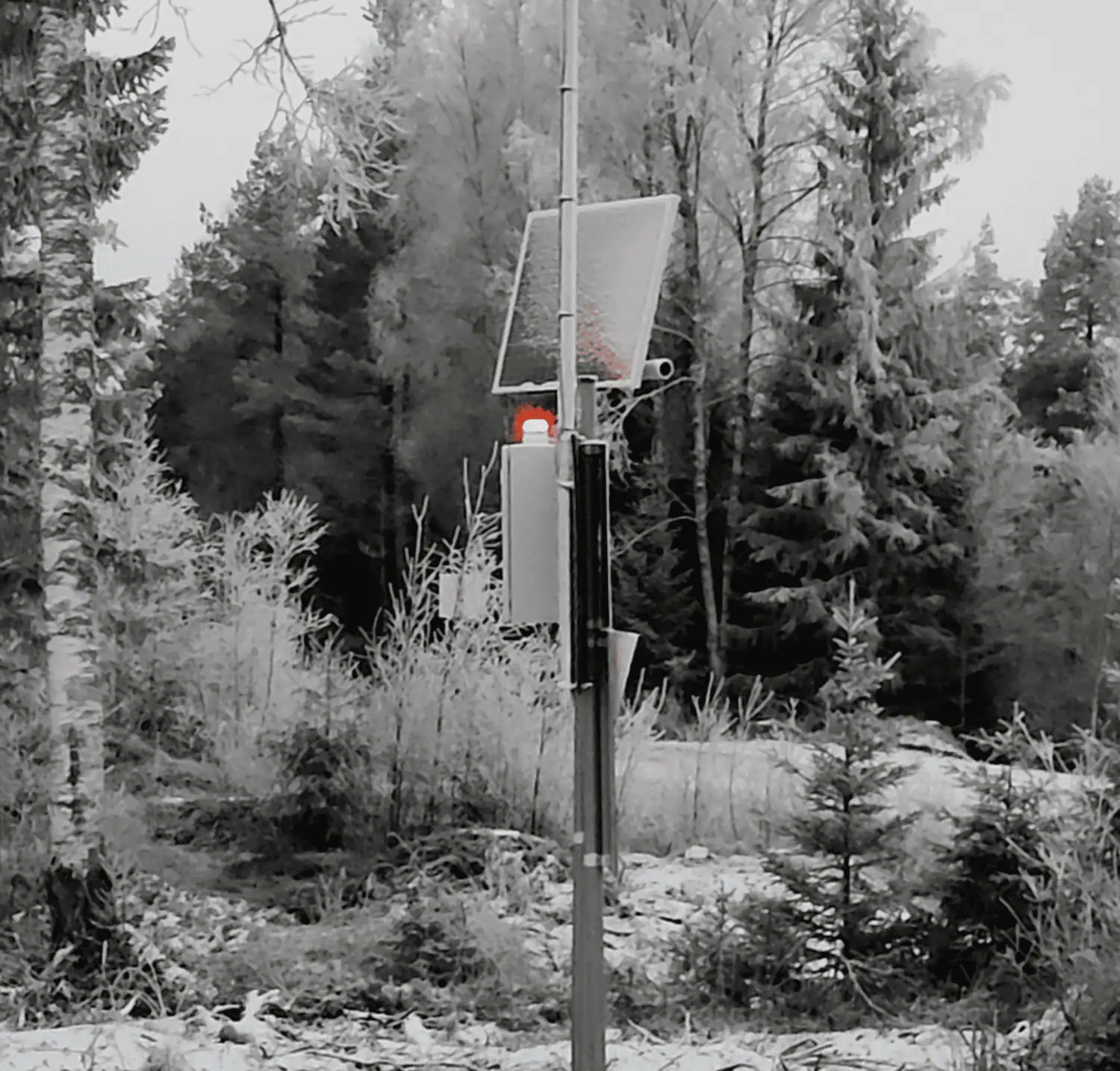
In suitable weather conditions - when moist air meets sub-zero temperatures - ice may accumulate on the blades of wind turbines. This ice buildup not only reduces turbine efficiency but also poses a significant safety risk due to the possibility of ice throw or falling ice. In Finnish conditions, almost every wind farm faces icing risks, which naturally increases the likelihood of ice throw events. The farther north the wind farm is located, the greater the risk.
Ice (and snow) can fall from both stationary and rotating turbine blades, as well as from the nacelle. Ice fragments thrown from rotating blades can range from tens of grams to several kilograms, and in the worst case may be propelled hundreds of meters from the turbine.
As part of the wind farm planning and permitting process, an ice hazard assessment is carried out using theoretical and experience-based analysis. In modelling, a wind speed of 15 m/s is typically used to determine the maximum ice throw and fall distances.
Ice accumulation is not a new phenomenon, and the market already offers various mitigation measures such as access barriers, blade heating systems, predictive icing models and locally installed warning systems. Many warning systems rely on flashing warning lights.
Flashing light systems typically receive their control signals and power via underground cabling from turbines or substations — and cabling is both expensive and time-consuming to install.
Emtele’s solution
Emtele has developed a modern, ecological and cost-efficient alternative — a fully wireless flashing light system that can be deployed quickly. Control signals are transmitted via local radio links installed in the wind farm, with an optional LTE-based forced control channel. A simple digital signal (dry contact) from the turbine automation system or icing sensors is sufficient to activate the system.
The system consists of a master controller and one or more slave units. It is highly scalable, supports multiple master controllers and an unlimited number of slave units, and offers configurable control and alarm logic.
Although the Polar Alarm system is primarily designed for icing hazard warnings in wind farms, it can also be used for a wide variety of local alarm transmission needs. In addition to flashing lights, the system can be extended with actuators, sirens and other devices.
Would you like to have an easy, no-commitment discussion about the FPA solution?
Emtele’s FieldCom Polar Alarm (FPA) is a fully wireless system, with light control handled by locally installed radio links — and with an optional LTE fallback control channel.
More information:
Ville Sallinen
Business Development
ville.sallinen(at)emtele.com




